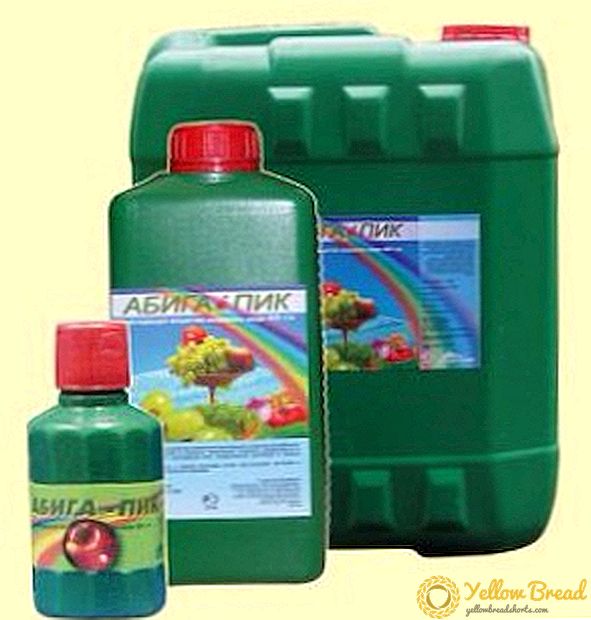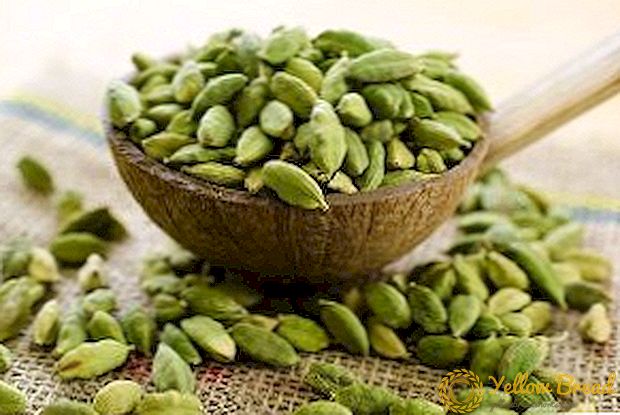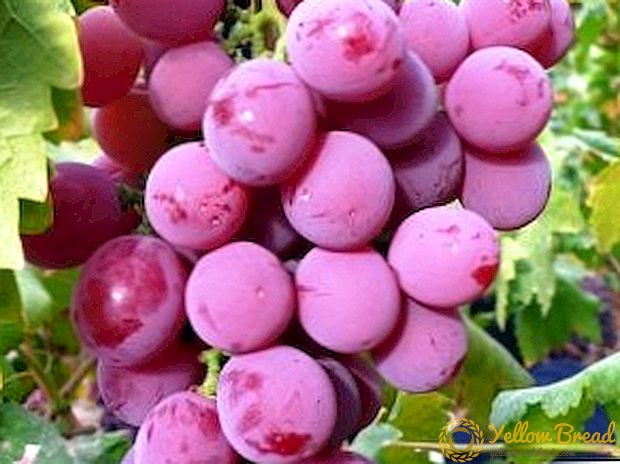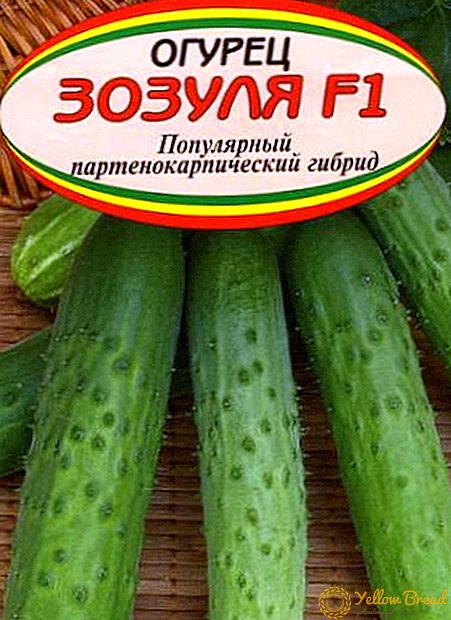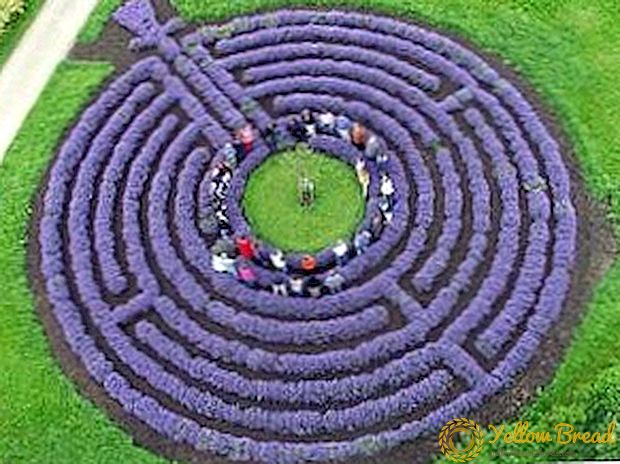 Raspberries - one of the most favorite berries of many people. Raspberry fruits always cause pleasant associations, reminiscent of the taste of childhood. However, there are many varieties of raspberries, and each of them is distinguished by its taste, size, shape of the bush, etc. In this article we will consider the remontant variety of raspberry taganka, we will tell about its main characteristics, as well as the rules of planting and care
Raspberries - one of the most favorite berries of many people. Raspberry fruits always cause pleasant associations, reminiscent of the taste of childhood. However, there are many varieties of raspberries, and each of them is distinguished by its taste, size, shape of the bush, etc. In this article we will consider the remontant variety of raspberry taganka, we will tell about its main characteristics, as well as the rules of planting and care
- History of creation
- Description and Features
- Bushes
- Berries
- Yield
- How to choose the seedlings
- Choosing the right place
- Lighting
- The soil
- Site preparation
- Step by step landing instructions
- Competent care - the key to a good harvest
- Watering and mulching
- Top dressing
- Preventive treatment
- Support
- Pruning
- Preparing for the winter
History of creation
This raspberry variety was bred in 1976 in Moscow. Scientists from the breeding and technological institute of horticulture and nursery were working on the breeding process. Today there are rumors that the Taganka raspberry variety is one of the newest raspberry varieties, but now you know that this is not entirely plausible information. The hybrid was obtained by crossing the variety Krupna Dvurod and the Scottish hybrid form 707/75.
Description and Features
Scientist breeder Kichina together with his wards brought this variety more than 40 years ago. And today, the berries and bushes of Taganka cannot be confused with other raspberry varieties.
Bushes
Raspberry bush of this variety is highly sprawling. Shoots tall grow vertically. Bushes can reach a height of two meters or more. The main shoots, the number of which on one bush varies from 6 to 8, are flexible, powerful and thick. Annuals are colored bright green, biennial ones are brown. On each sprout many fruit strong branches are formed, which are easily able to withstand a large harvest of shrubs. The leaves are collected in three on each of the cuttings. They are corrugated, painted in dark green. The main mass of thorns is located on the shoots that are not very solid and are painted in a light purple color.
Berries
The berries in this variety grow large sizes, even if the bushes do not have proper care. The average weight of the berries of an unkempt shrub reaches 7-8 g. For industrial purposes on cultivated soils berries reach a weight of 17 g. Some gardeners compare the size of Taganka fruits with the size of plums.
Yield
Since this raspberry variety is remontant, it bears fruit 4-5 times per season. With proper care from one bush for the season, you can collect up to 45 kg of berries. If you grow Taganka for industrial purposes on large plantations, then per 1 hectare of land yields up to 20 tons.
How to choose the seedlings
The main rule when choosing a sapling is a proven vendor. Buying planting materials in natural markets should not be, because the sellers there do not particularly follow the varietal purity and quality of the material sold. Moreover, in the markets, by negligence, you can buy a wild game that will produce little fruit, and quite small ones. Experts recommend buying seedlings in large nurseries or in online supermarkets.The latter often cooperate with large garden nurseries and offer the consumer only high-quality planting material.
 When buying, pay attention to the length of the shoots. Too tall seedlings are less viable, and it will be much more difficult for them to take root in a new place. A good planting material should have 2-4 small shoots (proven vendors often offer seedlings with just three shoots). You should also pay special attention to the root of the shrub. It must be strong, fibrous, well developed, and not have rot.
When buying, pay attention to the length of the shoots. Too tall seedlings are less viable, and it will be much more difficult for them to take root in a new place. A good planting material should have 2-4 small shoots (proven vendors often offer seedlings with just three shoots). You should also pay special attention to the root of the shrub. It must be strong, fibrous, well developed, and not have rot.
Choosing the right place
If you want to collect a large number of large and fragrant crops annually, then you need to choose the optimal place for planting this fabulous shrub.
Lighting
All gardeners know that raspberry is a light-loving plant, and it should be planted in a well-lit place. For planting poorly fit places under perennial trees or among tall shrubs. It is best to plant a variety of Taganka on the south or south-east side of the plot, where the sun's rays will prevail most of the daylight hours.
The soil
This repair raspberry variety grows well on nutritious loamy soils. Land for planting seedlings should be protected from blowing strong gusty winds. The groundwater level should lie at a depth not closer than 1.5 meters. Soil acidity should fluctuate around 6-7.5 Рн. The increased humidity of the site and the place where a large amount of water accumulates in the spring are unsuitable for planting Taganka.
Site preparation
If peaty soil type prevails on your site, then you need to replace the upper twenty-centimeter layer with clay with the addition of manure. The latter, due to the presence of various microorganisms, will contribute to the rapid decomposition of the peat mass.
 It should be noted that the Taganka raspberry does not like acidic soils, therefore, if the soil acidity is high in your area, then the following method should be taken: 100-140 g of lime is applied to each linear meter of the excavated trench. Some gardeners have noted good crop yields in places where the soil is composed of compost. When planting it can be made at the rate of 2 buckets per 1 m².
It should be noted that the Taganka raspberry does not like acidic soils, therefore, if the soil acidity is high in your area, then the following method should be taken: 100-140 g of lime is applied to each linear meter of the excavated trench. Some gardeners have noted good crop yields in places where the soil is composed of compost. When planting it can be made at the rate of 2 buckets per 1 m².Step by step landing instructions
After the site has been prepared for planting, it is necessary to proceed to the landing process itself. For this it is important to remember one rule: the distance between the bushes in a row should be 45-55 cm, between rows - 1.4-1.5 meters. Further instructions imply the following step-by-step operations:
- Planting pits at this point you should already be ready, as you previously engaged in the removal of the fertile layer and adding fertilizer to it. The depth of the pits should be 45-60 cm, width - 40-50 cm.
- At the bottom of the pits need to pour a small amount of prepared land. Then equip a good drainage system. For this you can use a brick or crushed stone. Drainage is laid out in a layer of about 7-10 cm. From above it is covered with a thin layer of soil.
- Now it is necessary to throw 40-50 g of complex mineral fertilizer to the bottom of the fossa, then insert the seedling there and sprinkle it with earth.
- The ground around the bush should be strapped so that a small hole is formed. Pour about a bucket of water into the hole and wait until it is completely absorbed into the soil.
- Then, slightly raise the bush so that the root neck is 4-6 cm above the soil surface.
- After that, the rest of the earth can be poured into the hole and a bit trampled over it.
- Around the seedling soil to mulch. For this you can use nettle, dry straw, peat, etc.
 Remember that every 6-8 years old raspberries need to be transplanted to a new place. In this case, the old bushes, if there is such a need, replace with new ones.The transplant is made because the raspberry bushes for the specified period of time are able to completely remove all useful mineral substances from the soil layer. Moreover, feeding in this case will be ineffective.
Remember that every 6-8 years old raspberries need to be transplanted to a new place. In this case, the old bushes, if there is such a need, replace with new ones.The transplant is made because the raspberry bushes for the specified period of time are able to completely remove all useful mineral substances from the soil layer. Moreover, feeding in this case will be ineffective.Competent care - the key to a good harvest
In order to get a good and high-quality return of the fruits every year, you need to know how to properly care for the Taganka raspberry.
Watering and mulching
The quality and taste characteristics of the fruits of this raspberry variety will largely depend on the correct irrigation technique. Taganka is a drought-resistant variety, but still it is not a camel thorn, therefore it is necessary to water it. Watering should be done every week in the morning or in the evening by sprinkling. It is necessary to ensure that the top layer of soil in the raspberries is always slightly damp. During dry periods of summer, watering should be done up to 2-3 times a week.
 The most important periods are when the shrub needs a lot of water: the beginning of flowering and the ripening of the first fruits. At these moments, you need to ensure that abundant watering soaked the soil for at least 30-35 cm.However, stagnation of water should not be allowed, otherwise it can lead to growth retardation and various diseases. It is necessary to mulch the soil in hot periods of summer, when the optimum soil moisture around the bushes should be maintained. Gardeners use as mulch: dry nettle, straw, peat, pine needles, rotted dry manure, dry leaves, etc.
The most important periods are when the shrub needs a lot of water: the beginning of flowering and the ripening of the first fruits. At these moments, you need to ensure that abundant watering soaked the soil for at least 30-35 cm.However, stagnation of water should not be allowed, otherwise it can lead to growth retardation and various diseases. It is necessary to mulch the soil in hot periods of summer, when the optimum soil moisture around the bushes should be maintained. Gardeners use as mulch: dry nettle, straw, peat, pine needles, rotted dry manure, dry leaves, etc.Top dressing
The first dressing Taganka receives immediately after planting. The soil enriched with mineral and organic substances will supply raspberries with useful substances throughout the whole year. The following season raspberry need to feed the humus, at the rate of 5 buckets of organic fertilizer per square meter of soil. This is best done in the spring or early summer. In periods of flowering shrub needs feeding in the form of mulch. Mulch should be from horse humus with straw. Such top dressing will help to improve aeroexchange and soil looseness. Every spring raspberries are fed with complex mineral fertilizers. You can buy them in any garden center immediately with instructions for use.
Preventive treatment
The repair raspberry Taganka has no pest enemies. This is explained by the fact that parasites often hibernate on lignified shoots, and they are removed the next spring or autumn. At the beginning of summer, parasites can start laying larvae or eggs on young, non-woody raspberry shoots, but this does not harm Taganka, since its young shoots begin to grow only in the middle of summer. In addition, this variety is protected by nature from worms in the fruit. The fact is that the fruits of this raspberry variety begin to ripen only in August, and there are no worms at this time.
- Annual autumn pruning raspberries.
- After pruning, all remote shoots must be destroyed (it is better to burn, in order to immediately destroy the larvae of all pests).
- Loosening the soil every 2-3 weeks to a depth of 2-3 cm.
- Digging the top layer of raspberry ground every spring.
- Regular inspection of shrubs for pests and diseases.
- Timely removal of weeds.

Support
Raspberry Taganka is a tall variety, so it needs a quality and timely garter. There are several ways to garter raspberries:
- Shpaler method. To do this, along the raspberry bushes at a distance of 3-4 meters you need to bury the wooden posts. On them to pull the wire with a diameter of 4-5 mm. Shoots are tied up to the wire in such a way that for every 70 cm length there are 6-8 shoots.
- Fan method. Between every two bushes it is necessary to bury the columns with a height of about 2-2.5 meters. To tie up the left part of the shoots of the right bush and the right part of the shoots of the left. As a result of this garter we get a raspberry cake in the form of a fan. Fan support contributes to better growth of young shoots and good air and light permeability.
- Bundle method. This method involves the garter of a raspberry bush to a post, which is dug into the ground in the middle of the shrubbery itself. This method is ineffective and rarely used by experienced gardeners.

Pruning
Pruning raspberry can be pruned at any time of the year. However, experienced gardeners recommend October pruning. All lignified shoots should be removed, and then immediately burned.

Preparing for the winter
Autumn pruning raspberry shrubs and is preparing for the winter. Remote shoots at ground level are burned, and only the roots in the ground need to winterize. The rhizome of the Taganka River withstands even severe northern frosts without any problems, so there is no need to create a special shelter for it. However, if you want to do transplanting raspberries in the spring, you can not delete all the shoots. Therefore, they must be tilted to the ground and covered with agrofibre.The soil around the stem can be covered with horse manure or peat. Finally, I would like to note that the Taganka raspberry can be stored for a long time in basements or refrigerators. It tolerates transportation, and after defrosting does not lose its beneficial substances. Culinary products from this variety Malinki have a bright aroma and a pleasant honey flavor.

